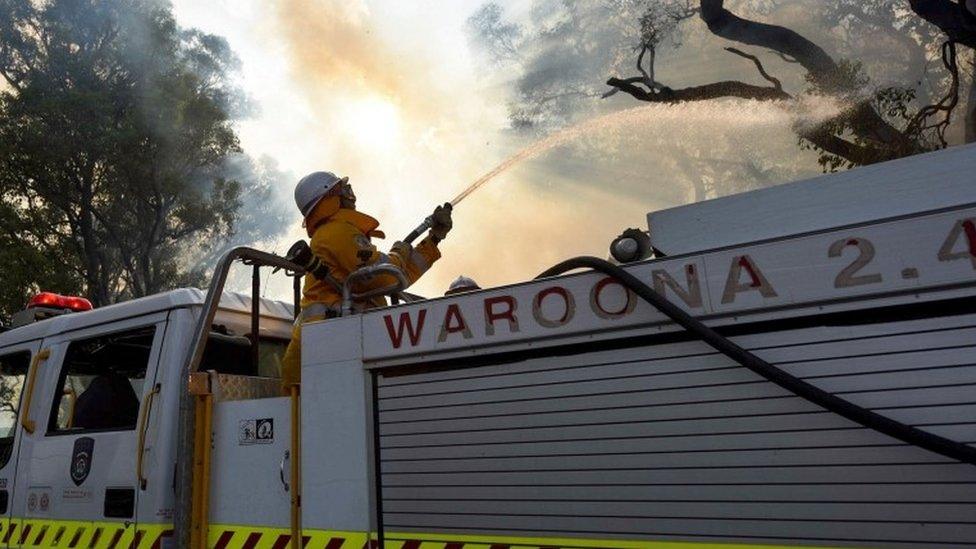Fighting Australia's bushfire threat
- Published
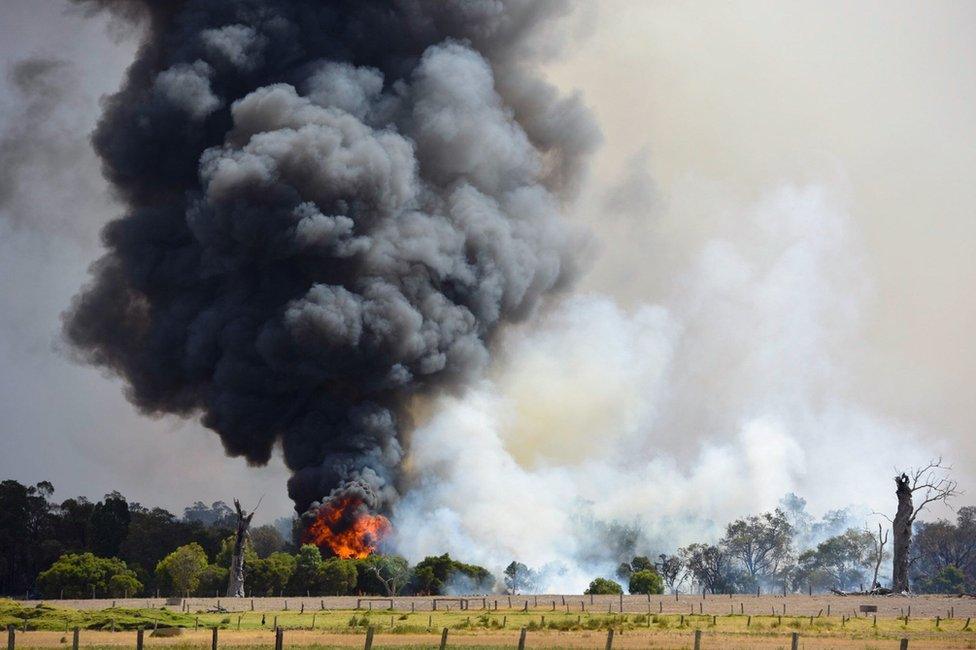
The Waroona bushfire led to emergency warnings across the region
Wildfires like the one which has destroyed nearly 100 home near Perth are a part of life in Australia, but can be devastating and deadly.
The BBC asks what can be done to reduce the impact of the fires, and whether the threat is getting worse.
What causes the fires?
It's no mystery. A simple combination of "lots of fuel, plus the dry, warm conditions in summer, and source of ignition," Dr Grant Wardell-Johnson of Australia's Curtin University told the BBC.
Human carelessness - and sometimes deliberate arson - are sometimes the source. But in the case of the fire burning around Yarloop, it is thought to have been a lightning strike that ignited dry ground.
There can be "as many as a thousand lightning strikes" during the course of a single storm, said Inspector Rolf Poole of the New South Wales Fire Service to the BBC.
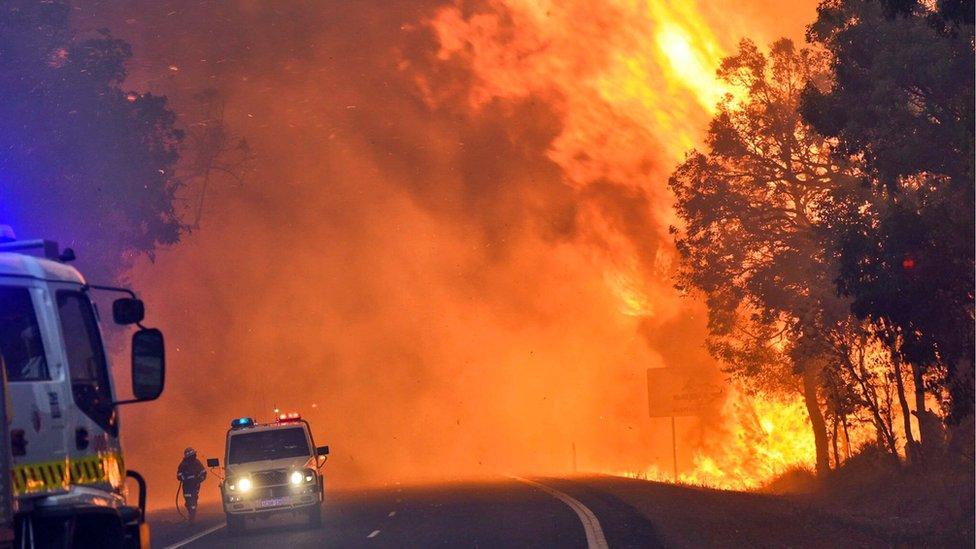
Fire fighters faced an intense blaze in Yarloop
Have conditions got worse?
Many analysts blame climate change for hotter, drier summers and a drop in the water table in many areas of Australia. Last year was one of the hottest on record and a bad fire season had been expected., external
"The whole soil profile is very dry," says Dr Wardell-Johnson.
Inspector Rolf Poole concurs: "There is sufficient scientific evidence that Australian fires are becoming more intense and more frequent" - a change he says many fire fighters have experienced for themselves.
"We are in a new world where we have to accept losses," says Dr Wardell-Johnson.
Is there any way to stop them happening?
Fires are a natural part of the Australian ecosystem. They help regenerate areas, and plants and animals have long adapted to the occasional destruction they cause.
Melbourne University's Prof Alan March, an expert in bushfire planning and urban design, told the BBC people used to think of fires as "as a force of nature that we could only respond to when it happened".
But he says "that's changed radically and we've realised that there is no such thing as a natural disaster, in a sense".
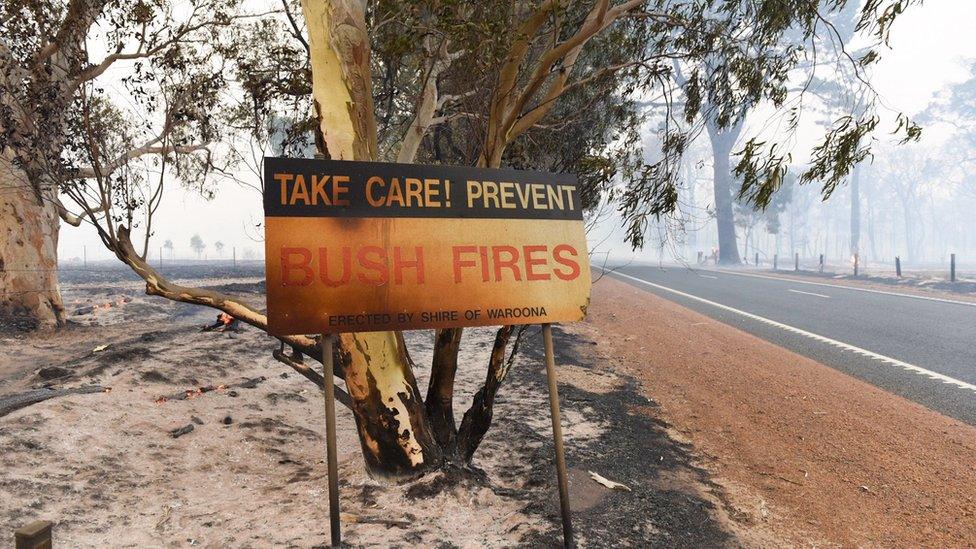
Education is crucial to reduce both the frequency and risk of fires, say experts
Reducing their impact of fires on humans and property is the crucial thing, while the frequency can be lessened by careful planning.
People living in fire-prone areas are well aware of the dangers - they are used to restrictions and Total Fire Bans being put in place to prevent accidental blazes.
Controlled burning to reduce the amount of vegetation available to fuel a potential bushfire is used in many vulnerable areas, including Western Australia, but it is no panacea.
Building fewer homes in especially fire-prone areas - and making those that are built more fire-resistant - is another step. Prof March says entire towns can be built to be more fire-resistant.
"Probably the biggest risk factor is older settlements," he says. That is true of historic Yarloop, which lost nearly 100 of its mostly wooden buildings.
New homes can also be rated to see if they meet their area's "bushfire attack level".
Are Australian bushfires different from elsewhere?
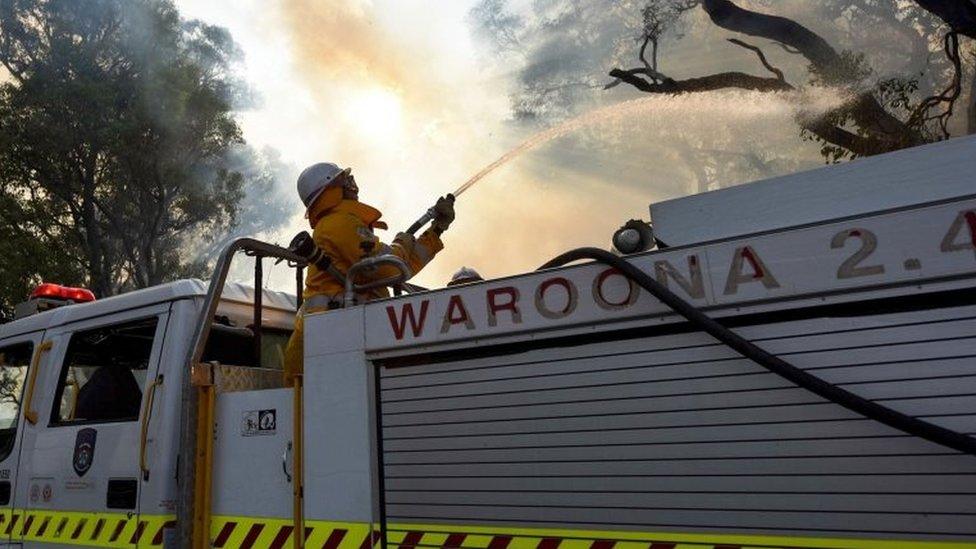
Firefighting tactics vary depending on the type of fire and its location
California, southern Europe and other parts of the world with similar climate to Australia also experience wildfires - but there are some differences.
Fires in eucalyptus forests, which cover huge areas of Australia, can be particularly intense.
Those trees have "very high biomass, are very flammable, and have a lot of oil," Dr Grant Wardell-Johnson.
In fact, the trees' oil, and their hard, drought-resistant leaves, are thought to be ways the trees have evolved to encourage fires, which eliminate competition while providing a fertile environment for the trees' quick regrowth.
The ferocity of fires also depends on factors like climate and topography - fires burn more quickly on slopes, for example.
What can firefighters do?
It depends on the severity of the fire.
Less fast-moving fires can be fought by "direct attack" - ground forces simply going in with hoses.
More dangerous situations have to be fought strategically, by dropping water, for example, or "back-burning" - controlled burning to clear an area of brush ahead of an advancing fire, in order to starve it of material to burn when it gets there.
How can people defend themselves?
Above all else: prevention and preparation.
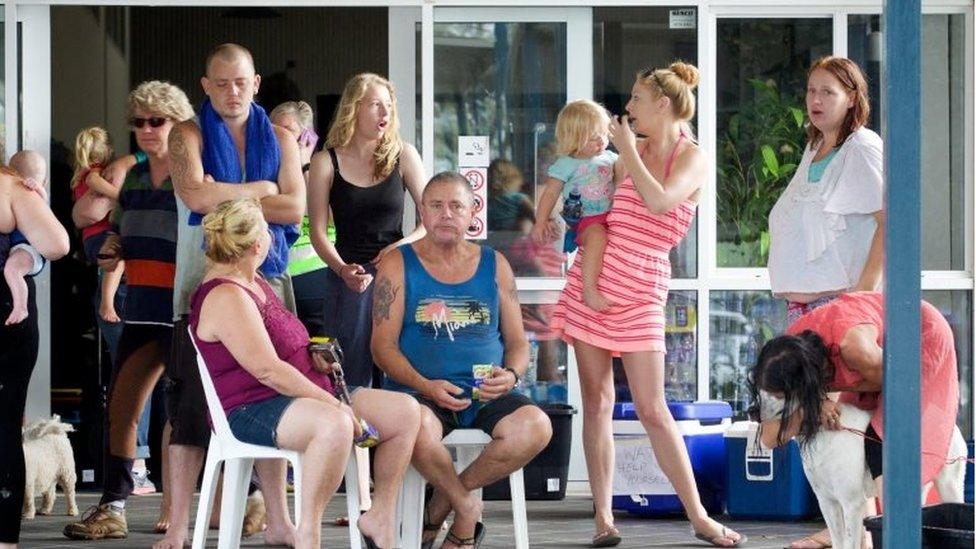
Getting out - as these Waroona residents did - can be the only possible action in the face of a fire
Clearing gutters and removing other flammable vegetation from around homes is a useful step, as is preparing fire fighting equipment, and ensuring it can reach all areas of your home and surrounding area.
Preparing a "defendable space area" in which you can stay even after losing your home, is also worth doing, says Prof Alan March.
Above all, you must "sit down with your family and discuss what you will do" in the event of a fire, insists Inspector Rolf Poole. Whether you want to, or are even capable of, fighting a fire. What you will do if you stay, and how you will escape if you leave.
And whatever you decide, everyone needs an escape plan - or several.
"When they are properly prepared, external, we do sometimes advise them to stay," he adds. But when it is severe enough, "it is much like trying to stand on a beach to stop a tsunami."
Reporting by Simeon Paterson
- Published8 January 2016
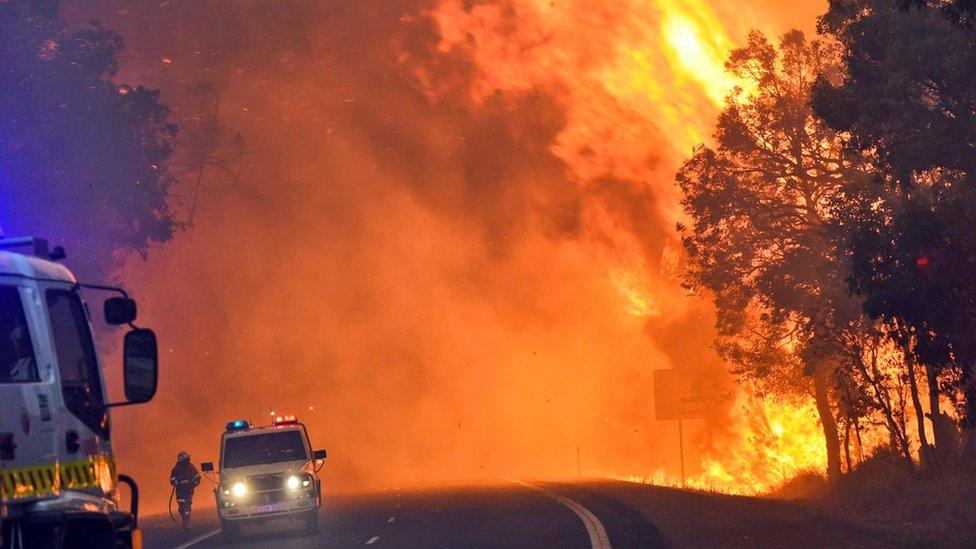
- Published8 January 2016
